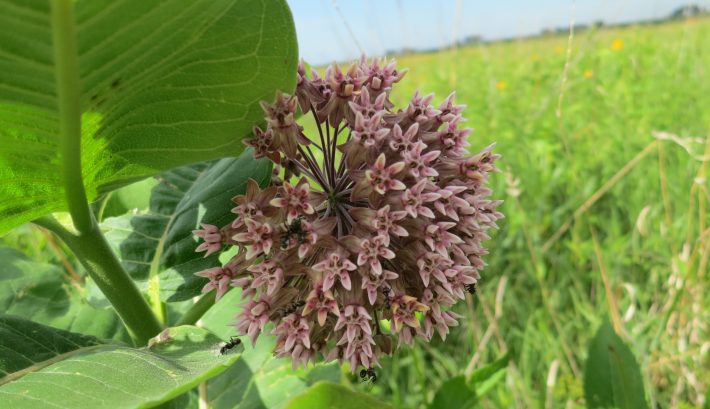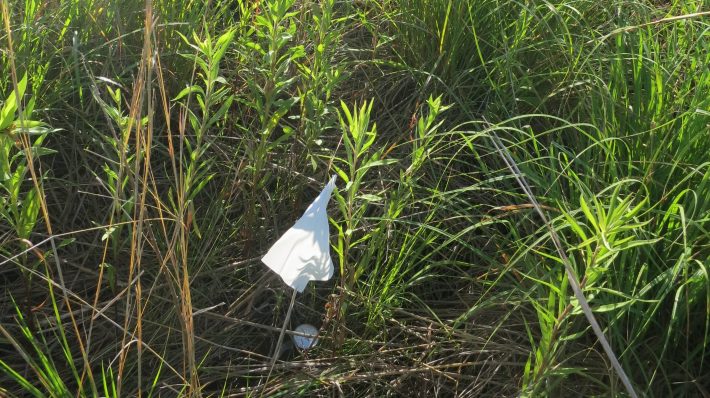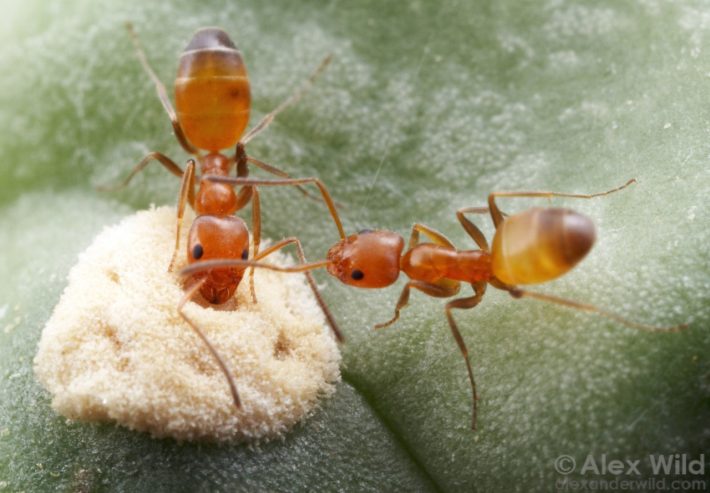Ant cravings for sugar and salt vary across the U.S.
Press release by lead author Michael Kaspari.
A U.S wide study published in the Journal of Animal Ecology finds that ants’ cravings for salt and sugar can be predicted by how liberally plants in their ecosystem gives these away.

Any traveller across North American finds that food cravings have a distinct geography: folks from Wisconsin love their cheese curds, runzas are the thing in Omaha, and breakfast burritos are da bomb Tucson. A new NSF-funded study by ecologists from the University of Oklahoma, reveals the same is true for ant societies: their cravings for salt and sugar have a geography.
The paper, in press in the Journal of Animal Ecology, reveals that the key predictor of salt and sugar cravings by ant communities is how liberally their ecosystem’s local grasses and flowers give salt and sugar away.
Salt and sugar are required in ample amounts by all animals, so much so that one might expect that, when it comes to cravings, an ant is an ant is an ant. But ecologists Michael Kaspari and Ellen A. R. Welti, working with geographer Kirsten de Beurs, found that ant communities have distinct cravings for things sugary and salty.
The team travelled to 54 different grasslands in 2017—starting in the south US in early spring, and finishing in the northern tier of South Dakota and Minnesota in late summer. In each grassland, they dropped 100 tiny tubes stocked with sugar or salt; one hour later, they retrieved the vials, snapped them shut, and tallied the ants within.
They found that in some ecosystems full of ants, like south Florida, the vials were ignored. Others had ants cramming sugar vials, salt vials, or both. Why the difference?

Ants regularly drink nectar from flowers or other special glands in a plant’s leaves or roots. This nectar cocktail can vary widely in sugar and salt content between plant species. Kaspari and colleagues found that whole grasslands also differ in their status as depots of salt and sugar. Grasslands with fast growing plants, like those in south Florida, produced so much sugar that the ants turn up their antenna at sugar baits. Likewise, some grasslands, for reasons still unclear, have plants that suck up and dispense salt.

“All in all, we found some grasslands, like south Florida, appear to be pumping out their own form of Gatorade, while others in Nebraska or Minnesota were sugar or salt deserts. The ants responded in turn, spurning baits in the former, and crowding into baits in the latter” said Kaspari, lead author of the study.
This is a big deal, Kaspari says. “Ants help hold a lot of ecosystems together, dispersing seeds, scavenging refuse, and aerating the soil. Plants feed ants by manufacturing sugar from rain and sunshine; plants suck up salt falling in rain or sprayed to de-ice roads. All of these things are changing rapidly; our results provide a possible roadmap detailing how climate change shapes ant communities, and by extension the ecosystems they shape.”
Moreover, he points to another intriguing notion. “Just perhaps, plants fiddle with their sugar-salt cocktails to lure and manipulate a potentially powerful ally—ants. No grasshopper will stay long on a flower swarming with ants.”
Read the article for free (for a limited time) here:
, , . The nutritional geography of ants: Gradients of sodium and sugar limitation across North American grasslands. J Anim Ecol. 2019; 00: 1– 9. https://doi.org/10.1111/1365-2656.13120
Media contact:
Dr Michael Kaspari
E: mkaspari@ou.edu
Like what we stand for?
Support our mission and help develop the next generation of ecologists by donating to the British Ecological Society.